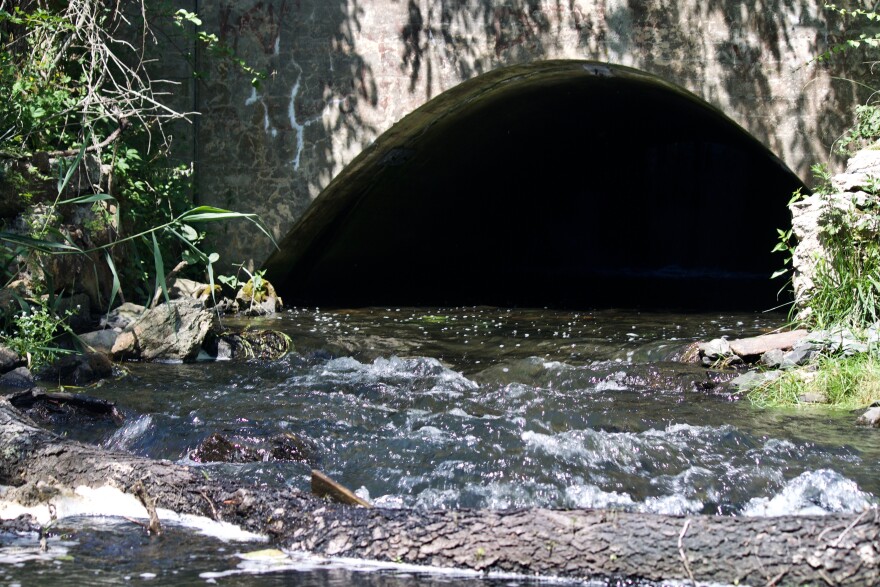Suffolk County Executive Steve Bellone announced on Tuesday the Carmans River Fish Ladder Project at Lily Lake Dam is now complete. The new passageway along the Carmans River, one of the longest on Long Island, will allow for better movement of migratory fish and improve flood mitigation.
The $2.8 million project, funded by county and state grants, has been years in the making. Two other fish ladders were already in place at other sites along Carmans River, but officials say this latest passageway creates the first unrestrained route for fish in over 260 years.

The stillness of the water behind the dam has accelerated the impacts of climate change. Water in the dam gets heated up like a greenhouse, creating a breeding ground for invasive plants and pests that dominate the surface. This has been a big problem for Long Island’s brook trout.
“Extremely hot water is flowing downstream, affecting a native trout stream that is dependent on cold water,” said Kevin McAllister, an environmental advocate with Defend H2O. “Flowing water is cold water.”
This inland dam was built in the colonial era near a small mill community in Yaphank (which is the Indigenous word for mouth of the river). McAllister told the WSHU podcast Higher Ground in 2021 that being situated around today’s suburban setting has made the health of the river worse.
“Drainage into the conveyances, sheetflow off of the streets, pipes that may discharge into this water body…”
In the podcast, McAllister explains these footprints of the past do not serve the same purpose anymore, and over the years the dam has been more trouble to the environment than maybe it was worth. He believes the only way forward is to allow the area to return to nature.

“The true remedy here is to allow reversion back to streamflow where the impoundment would contract, shrink down, exposing historic wetland soils. The emergence of a freshwater marsh would be rapid,” he said.
Just down the road is a spillway into the Carmans River. Hiking downstream, McAllister stopped to take the water’s temperature. Even though the water felt cold to the touch, McAllister discovered a problem.
“About 64 degrees…it’s on the edge, certainly, and I will tell you that this heats up into the seventies,” he said.
That’s warm water for trout. They like the water at around 55 degrees Fahrenheit. Thick vegetation that thrives in the heat blocks their swimming corridors, and the gravel bottoms where the trout go to spawn.
McAllister said the faster flow of water would completely rejuvenate the area, not only restoring important habitat for wildlife, but also help protect the surrounding community from the effects of climate change.
“The propensity of storm events and flooding, 23 acres of wetlands is a giant sponge in a storm event,” McAllister said. “It will take up that water as opposed to property damage on waterfront homes.”
As passionate an advocate as he is, McAllister acknowledged that people and the environment can live harmoniously. It might just take a reevaluation of what nature means for our way of life.
“I’ve always held that Long Islanders are defined by their waters — the coastal fringe, as well as the fresh water stream that I’m standing in,” he said. “The environmental benefits of natural systems being intact and functioning as nature designed is so important for our community lifestyle and our quality of life.”



